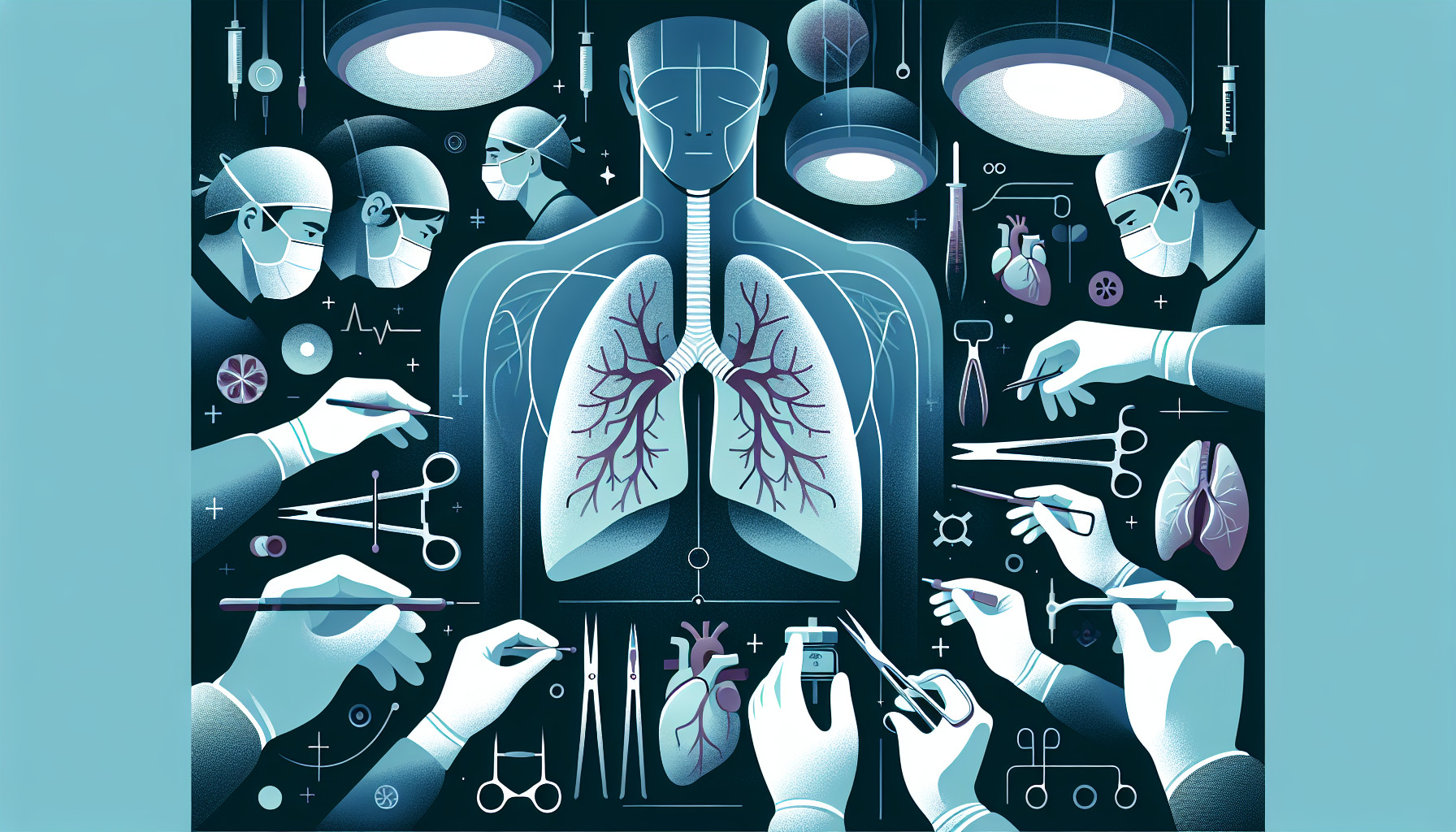Our Summary
This research paper discusses the ongoing issues with complications involving the airways after a lung transplant. These complications can vary quite a bit and can be very serious, even leading to death. The problem is that there is no widely accepted way to grade or define these complications, which makes it difficult to consistently identify and treat them. While improvements have been made in the surgical procedure and preserving the organ, there are still many risk factors that we don’t fully understand or know how to control. Treatment also varies widely. Often, a variety of approaches are needed to manage these complications. In severe cases, an airway stent (a tube to keep the airway open) might be used. This should be managed by a transplant team who are experts in placing these stents and managing any long-term complications that come with them.
FAQs
- What are some common airway complications after a lung transplant?
- How is airway stenting used in the management of complications after a lung transplant?
- What are the current challenges in defining and grading airway complications after lung transplantation?
Doctor’s Tip
One helpful tip a doctor might tell a patient about lung transplant is to closely follow the post-transplant care plan provided by the transplant team. This may include regular follow-up appointments, medication management, lifestyle changes, and monitoring for any signs of complications. It is important to communicate any concerns or symptoms to the transplant team promptly to ensure the best possible outcome.
Suitable For
Patients who may be recommended for a lung transplant typically have end-stage lung disease, such as cystic fibrosis, chronic obstructive pulmonary disease (COPD), idiopathic pulmonary fibrosis, or pulmonary hypertension, that is not responding to other treatments. They may also have severe symptoms, such as shortness of breath, fatigue, and decreased quality of life, despite medical management. Additionally, patients must meet specific criteria set by transplant centers, such as being physically and psychologically able to undergo surgery and adhere to post-transplant medications and follow-up care.
Timeline
Before lung transplant:
- Patients undergo a thorough evaluation process to determine if they are suitable candidates for a lung transplant. This includes medical history, physical exams, imaging studies, and various tests.
- Once approved for a transplant, patients are placed on a waiting list for a donor organ. The wait time can vary depending on factors such as blood type, severity of illness, and availability of donor organs.
- During the waiting period, patients may experience worsening symptoms related to their lung disease and may require additional medical interventions to manage their condition.
After lung transplant:
- Following a successful lung transplant surgery, patients are closely monitored in the hospital for complications and to ensure the new organ is functioning properly.
- Patients undergo a period of recovery and rehabilitation to regain strength and lung function. This may involve physical therapy, respiratory therapy, and medication management.
- Patients will require lifelong immunosuppressive medications to prevent rejection of the transplanted lung. These medications have potential side effects and require careful monitoring.
- Patients will have regular follow-up appointments with their transplant team to monitor their health, adjust medications, and address any issues that may arise.
- Despite the transplant, patients may still experience complications such as airway complications, infections, rejection, or other medical issues that require ongoing management and treatment.
What to Ask Your Doctor
- What are the potential risks and complications associated with a lung transplant, specifically related to airway complications?
- How will my post-transplant care plan address the risk of airway complications?
- What is the protocol for monitoring and early detection of airway issues after the transplant?
- What are the available treatment options for airway complications post-transplant, and how are decisions made about which treatment to pursue?
- How experienced is the transplant team in managing airway complications, and what specialized expertise do they have in this area?
- Are there any specific lifestyle changes or precautions I should take to reduce the risk of airway complications post-transplant?
- How often will I need to undergo bronchoscopy or other imaging tests to monitor my airway health after the transplant?
- Are there any specific warning signs or symptoms I should watch out for that may indicate a potential airway complication?
- How will the transplant team work with other specialists, such as pulmonologists or thoracic surgeons, to address any airway issues that may arise?
- What is the long-term outlook for patients who experience airway complications post-lung transplant, and what support resources are available for managing these challenges?
Reference
Authors: Frye L, Machuzak M. Journal: Clin Chest Med. 2017 Dec;38(4):693-706. doi: 10.1016/j.ccm.2017.07.010. Epub 2017 Sep 20. PMID: 29128019
